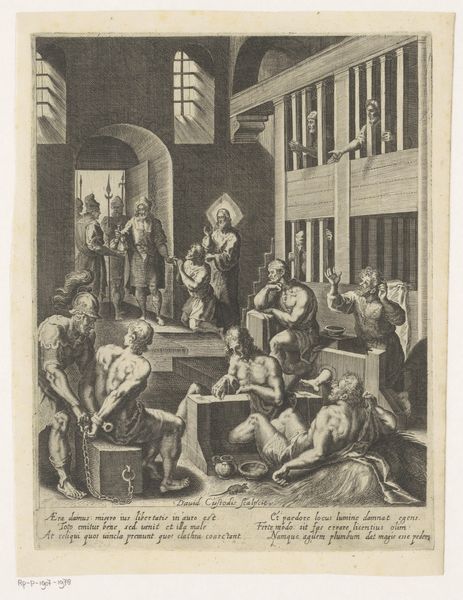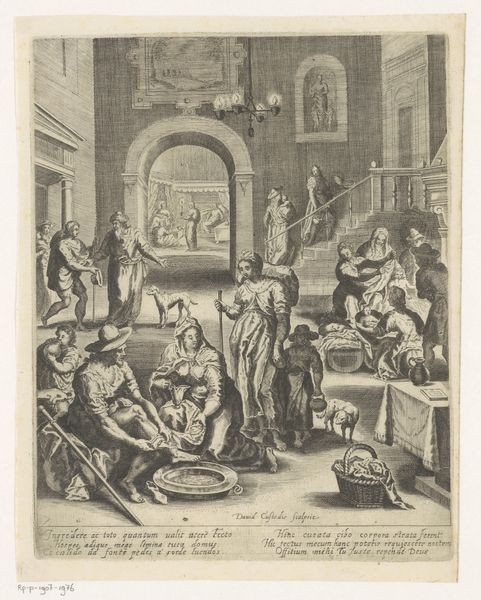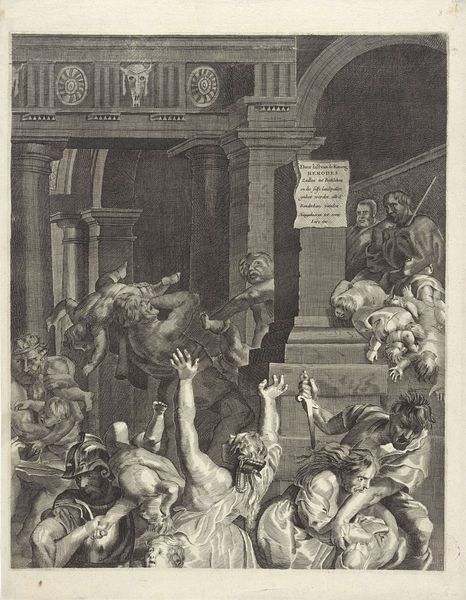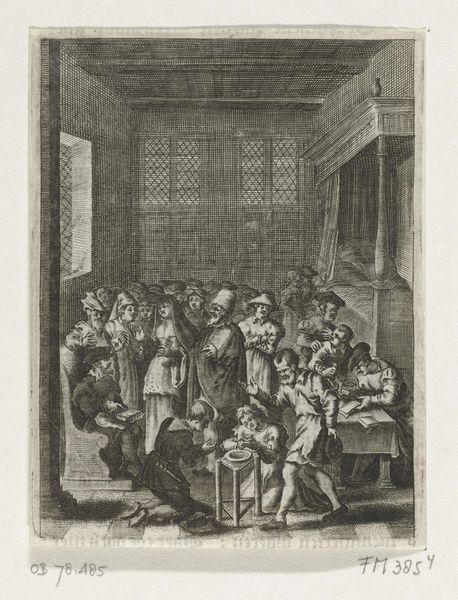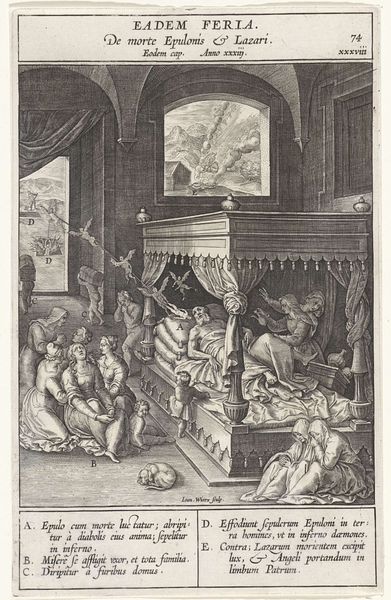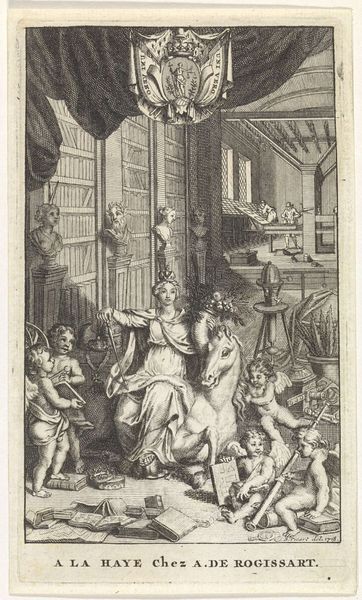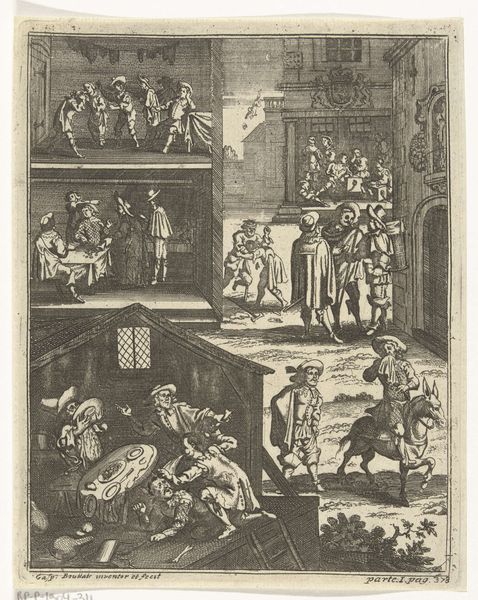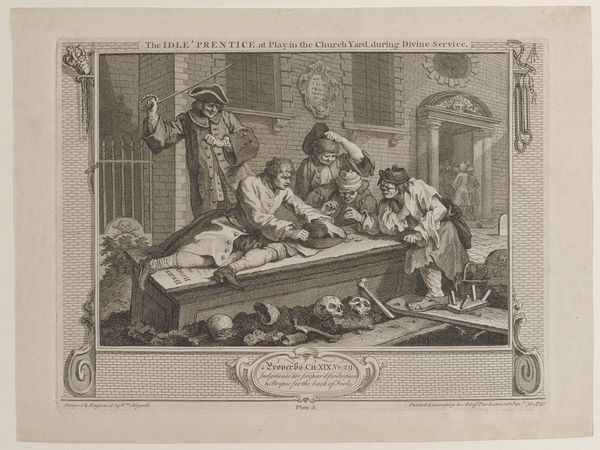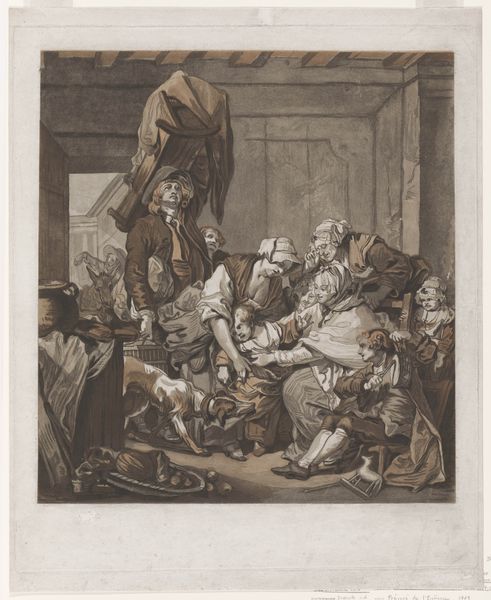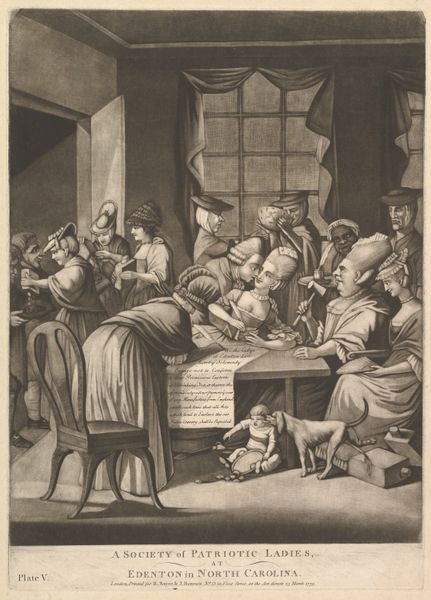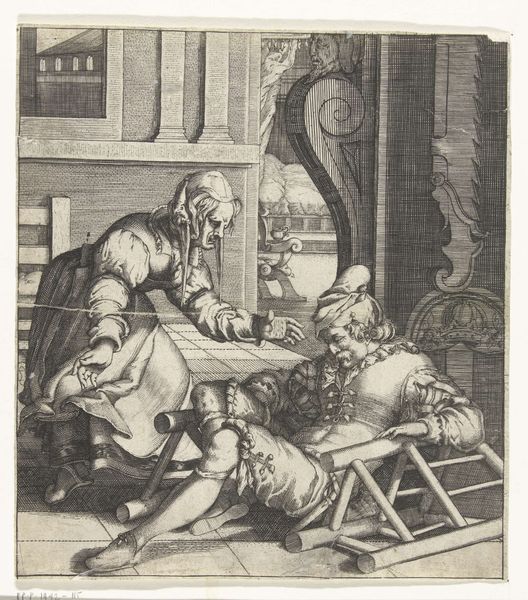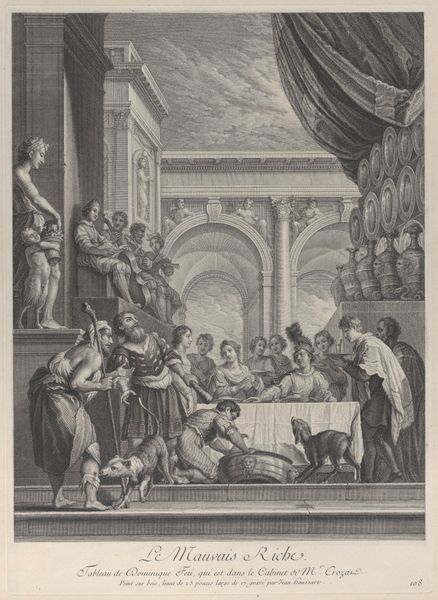
Dimensions: plate: 17 1/4 x 13 in. (43.8 x 33 cm) sheet: 18 7/16 x 13 3/4 in. (46.8 x 35 cm)
Copyright: Public Domain
Editor: Here we have William Hogarth’s engraving, “Credulity, Superstition, and Fanaticism,” from 1762. The composition is chaotic, yet it feels deliberately arranged, wouldn't you agree? It’s unsettling and intensely critical. What do you see in this piece beyond the surface satire? Curator: This engraving serves as a powerful indictment of religious extremism during the Enlightenment era. Hogarth's critique isn't simply about ridiculing belief; it's a sharp commentary on the social and political implications of irrationality. Notice how the composition juxtaposes supposed piety with earthly vices. Where do you think Hogarth is directing our gaze, and what message does that positioning send? Editor: Well, my eyes are drawn to the clergyman in the pulpit but also to the intimate encounter happening amongst the parishioners, which suggests hypocrisy and misplaced priorities. Curator: Precisely. Hogarth masterfully unveils the tensions between the preached word and lived realities. By layering caricature, symbolism, and social observation, Hogarth isn't just mocking individuals; he’s exposing systemic flaws, such as the manipulation of the vulnerable through fear and ignorance. It’s important to see it within the context of class structures, gender roles, and the prevailing attitudes towards marginalized groups. Can you spot any other instances of satire within the print? Editor: The visual cacophony feels pointed, and his figures feel individualized yet part of the greater chaos he is illustrating, adding an additional dimension to his criticism of group-think, power, and irrationality. It is hard to spot a single area that is not dripping in satire and wit! Curator: Exactly. What Hogarth provokes, even today, is a recognition of the potential for social control exerted through manipulated beliefs. Understanding the historical context allows us to appreciate his profound message concerning free thought and societal responsibility, not as history but as an enduring call for critical consciousness. Thank you for bringing this insightful work to our attention. Editor: Thank you for helping me see its layers of meaning and the social commentary it makes. I'll never look at Hogarth the same way.
Comments
No comments
Be the first to comment and join the conversation on the ultimate creative platform.
